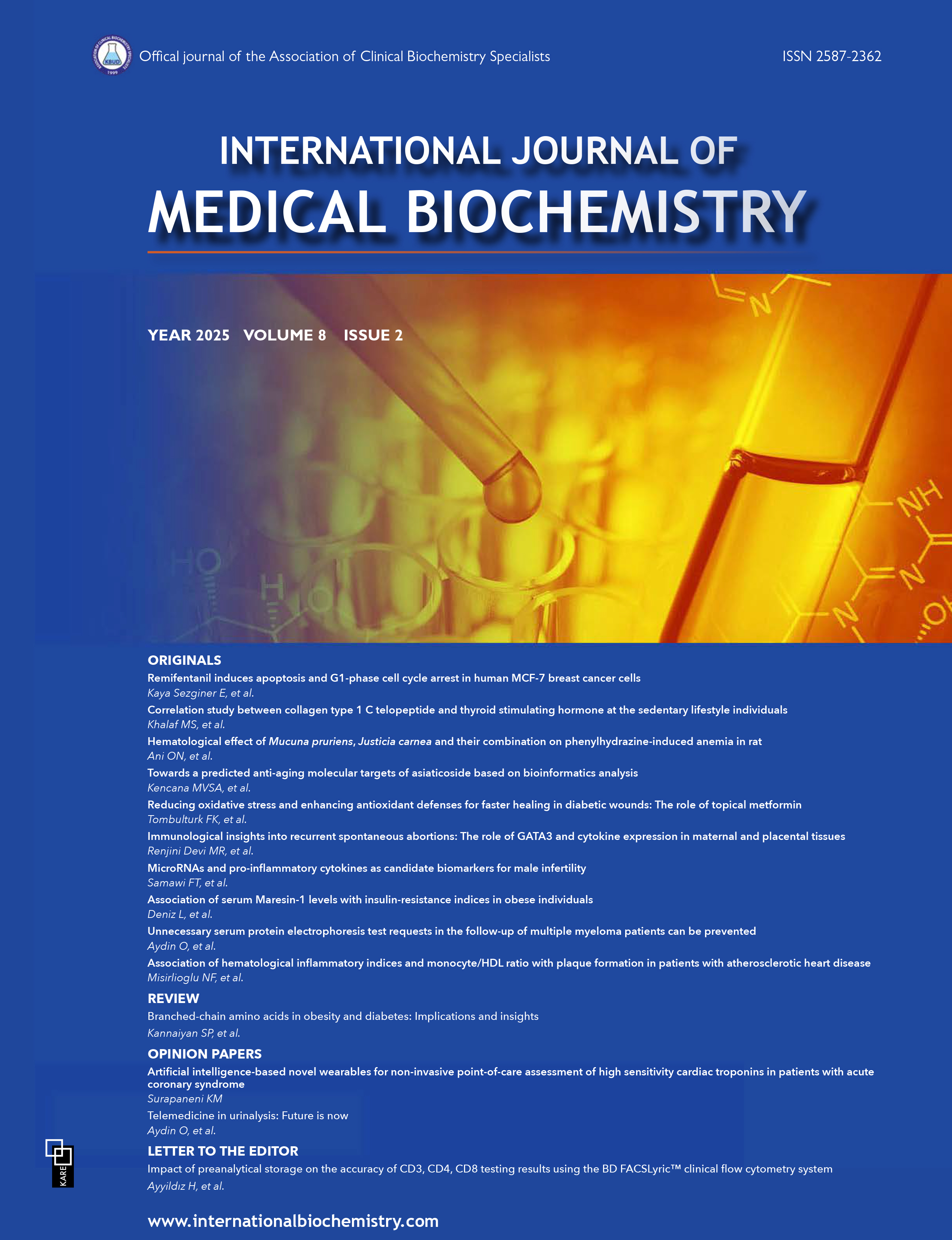Evaluation of total antioxidant capacity in human seminal plasma
Meltem Demir1, Sebahat Ozdem21Department of Clinical Biochemistry, Medicalpark Hospital, Bilim University Vocational School of Health Services, Dialysis Program Antalya, Turkey.2Department of Medical Biochemistry, Akdeniz University Faculty of Medicine, Antalya, Turkey
INTRODUCTION: Male factor infertility accounts for up to half of all cases of infertility. Oxidative stress (OS) is a condition associated with an increased rate of cellular damage induced by oxygen and oxygen-derived oxidants, commonly known as reactive oxygen species (ROS).
METHODS: Semen samples were obtained from 65 males aged 23-36 years who were a partner in an infertile couple and presented at the urology clinic of Antalya Medicalpark hospital. Routine spermiogram parameters were analyzed according to World Health Organization guidelines. The study was conducted using a normozoospermic group (n=18) with normal semen parameters, and 47 men with abnormal semen parameters; azoospermic (n=16), teratozoospermic (n=16) and oligoasthenoteratozoospermic (n=15). The total oxidant status (TOS), total antioxidant capacity (TAC), activity, and advanced oxidation protein products (AOPPs) levels in semen were determined using spectrophotometric method. The oxidative stress index (OSI) value of the seminal plasma was calculated. The results were analyzed statistically.
RESULTS: The AOPPs level, TOS activity and OSI index value in seminal plasma was significantly higher in the oligoasthenozoospermic, teratozoospermic and azospermic groups compared with the normozoospermic group. In contrast, the TAC activity was higher in normozoospermic group than infertile group.
DISCUSSION AND CONCLUSION: This study investigated whether the antioxidant status and the extent of protein oxidation in seminal plasma could be a valuable predictor of sperm function. The results suggest that TAC assay and OSI index may be useful markers for male infertility.
Manuscript Language: English






